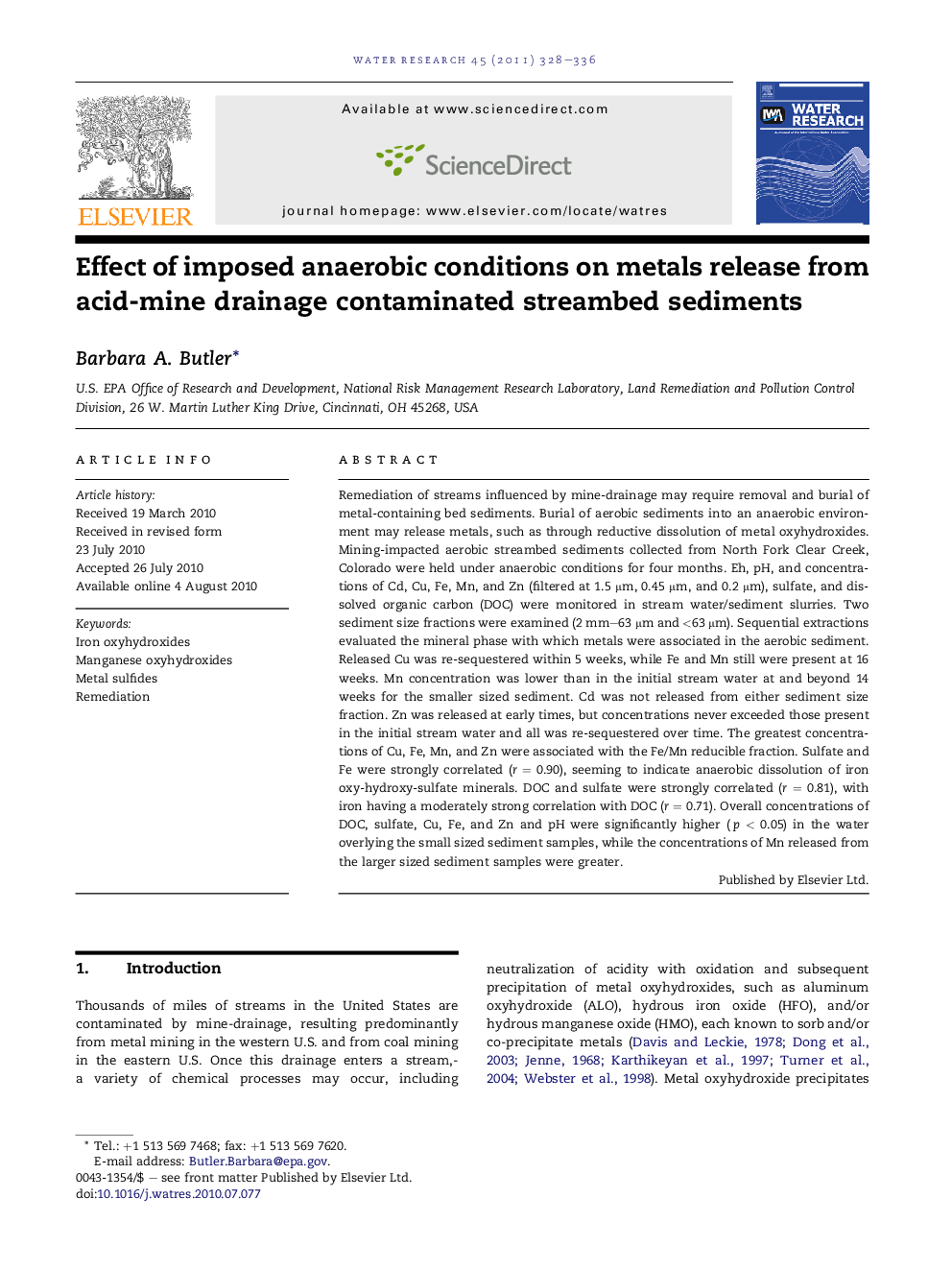| Article ID | Journal | Published Year | Pages | File Type |
|---|---|---|---|---|
| 4482096 | Water Research | 2011 | 9 Pages |
Remediation of streams influenced by mine-drainage may require removal and burial of metal-containing bed sediments. Burial of aerobic sediments into an anaerobic environment may release metals, such as through reductive dissolution of metal oxyhydroxides. Mining-impacted aerobic streambed sediments collected from North Fork Clear Creek, Colorado were held under anaerobic conditions for four months. Eh, pH, and concentrations of Cd, Cu, Fe, Mn, and Zn (filtered at 1.5 μm, 0.45 μm, and 0.2 μm), sulfate, and dissolved organic carbon (DOC) were monitored in stream water/sediment slurries. Two sediment size fractions were examined (2 mm–63 μm and <63 μm). Sequential extractions evaluated the mineral phase with which metals were associated in the aerobic sediment. Released Cu was re-sequestered within 5 weeks, while Fe and Mn still were present at 16 weeks. Mn concentration was lower than in the initial stream water at and beyond 14 weeks for the smaller sized sediment. Cd was not released from either sediment size fraction. Zn was released at early times, but concentrations never exceeded those present in the initial stream water and all was re-sequestered over time. The greatest concentrations of Cu, Fe, Mn, and Zn were associated with the Fe/Mn reducible fraction. Sulfate and Fe were strongly correlated (r = 0.90), seeming to indicate anaerobic dissolution of iron oxy-hydroxy-sulfate minerals. DOC and sulfate were strongly correlated (r = 0.81), with iron having a moderately strong correlation with DOC (r = 0.71). Overall concentrations of DOC, sulfate, Cu, Fe, and Zn and pH were significantly higher (p < 0.05) in the water overlying the small sized sediment samples, while the concentrations of Mn released from the larger sized sediment samples were greater.
